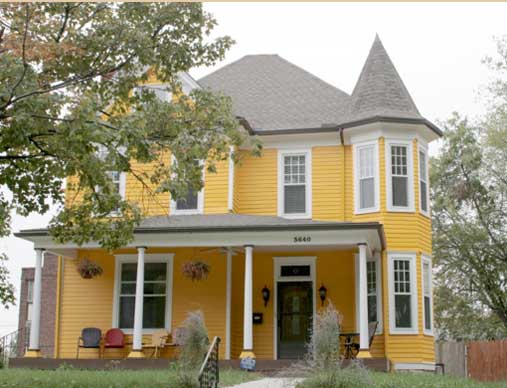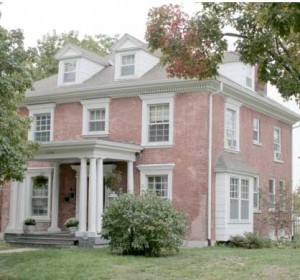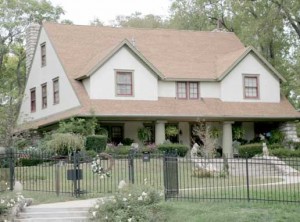
This home at 3640 Tracy is one of five featured on this year’s Squier Park Homes Tour this Saturday. Squier Park was listed on the National Register of Historic Places in April, making it only the second residential district east of Troost to be so honored. Photos courtesy Squier Park Neighborhood Association.
According to the neighborhood’s vice president, Johnathon Bish, the biggest problem with Squier Park is that “no one knows Squier Park.”

Squier Park was developed from 1887-1915, and was listed on the National Register of Historic Places in 2012.
Squier Park is a historic neighborhood encompassing 16 blocks between Armour Boulevard to the north, 39th Street to the south, Paseo Boulevard to the east, and Troost Avenue to the west.
The homes tour is the largest fundraiser for the small neighborhood, which got a grant from the Neighborhood Tourism Development fund to help make it possible. Residents have recently identified creating a park as one of their goals, and they hope proceeds from the tour will help with that.
The history of Squier Park begins with James J. Squier, a businessman who made a fortune buying cattle for a packing house in Kansas City and later helped start two banks for cattlemen. He built a country estate between 36th and 41st Streets, from Troost to the Paseo. At first, the manor included a large residence, formal landscaping, a fishpond, and even a deer park. Still, before the turn of the century, Squier subdivided his land into lots for residential development.

The five homes on the Squier Park Homes Tour represent a variety of architectural styles.
By 1920, the area was filled with homes designed by prominent Kansas City architects, including Louis Curtiss, John McKechnie, Nelle E. Peters, Selby Kerfiss, and Smith, Rea & Lovitt. The homes were built on spacious lots and contained modern luxuries such as hot water, sleeping porches, and multiple bathrooms.
Here’s Wikipedia’s description of Squier Park’s architecture:
Squier Park has a wide variety of building designs reflecting the prolonged development in the neighborhood as well as the evolution of popular architectural styles popular during this period. The neighborhood developed in waves, from the 1880s on the north side of the neighborhood, to 1915 on the south side. Many of the homes on the south end of the area are architect-designed dwellings. In other areas of Squier Park, builders constructed multiple adjacent homes with the same basic design and slight variations.
The most common architectural styles represented in Squier Park are the Prairie School and Craftsman, with numerous examples of the Kansas City Shirtwaist variant. There are also examples of Folk Victorian dwellings as well as historical revival styles, including Colonial Revival, Classical Revival, and Tudor Revival. Other unique dwellings exhibit the Shingle and International Styles.
Pingback: In Squier Park neighborhood, “we do our best to get to know each other” at Midtown KC Post